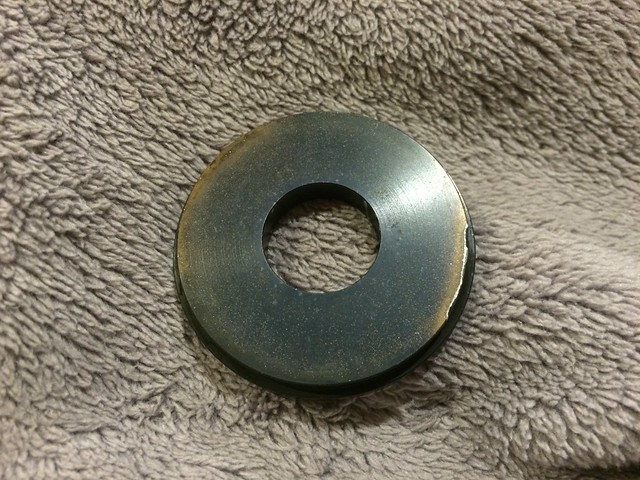Yesterday I flew a H250G-M in my never used Dr. Rocket 29/240 case. I had two problems with the motor:
1. Motor Ejected at 6.5 seconds, significantly earlier than the 10 second delay associated with the -M medium delay.
2. The Forward Seal Disk leaked hot gases and caused a slight blister in my never before used case. I'm sad about that.

Here's the
AT Assembly Drawing for the H250G-M:
View attachment 299571
I inspected the components and found that the leak appeared to have occurred between the Forward O-ring and the Forward Seal Disk.
The Seal Disk O-ring did show signs of gas leakage, but not nearly as much as the Forward O-ring.

The Forward Seal Disk was dicolored and had some minor erosion right at the edge on the side that seals with the Forward O-ring:


The liner showed signs of gases leaking between it and the case wall.
The liner was shorter in length at the location that the seal failure occurred. Could this have been a manufacturing problem, or would this be the expected result to a liner where hot gases leaked past a seal? The side of the liner that did not leak measured just under 7 1/16", while the side of the liner where the leak occurred measured just under 7 1/32". The forward side of the liner cut looked slightly slanted.. which is in-line with my measurements.
Forward side of Liner where seal failure occurred:

Side view of Forward side of the liner. The left side was where the seal leaked hot gases. Notice that the left side is slightly shorter than the right side:

The seal failure resulted in a slight blister of my new never-been-used Dr. Rocket 29/240 case.
It's hard to detect, but here's a picture of the blister, which is 0.0075" per digital caliper measurement:

Inside the case, I have not been able to remove a black mark that is at the location of the seal failure. I suspect the black material is a mixture of AP and O-ring material.
I used digital calipers to measure the location of the edge of the leakage mark. It was 0.595" from the forward edge of the case:

Next, I measured the thickness of the components that were installed in the forward side of the case, the forward closure and Forward O-ring. I measured the distance as 0.599", which lines up perfectly with the black mark inside the case where the leak emanated:

This pretty much proves where the leak was. I'm certain that I used plenty of grease and that the O-rings were all well placed, sliding in smoothly. Both closures were fully seated and all felt normal during assembly. My prime suspect is that the liner may not have been squarely cut. If the liner were not cut square to it's length, then it would not evenly hold the Forward Seal Disk against the Forward O-ring. This would provide an escape route for the hot high-pressure gases.
Its amazing that this motor burns out in 0.9 seconds and that this much damage can happen.
I'm not sure if I should use this case with even this slight blister. Perhaps I could make sure the blistered side is nearest the nozzle end, where I understand the pressure and temperatures to be less extreme.














